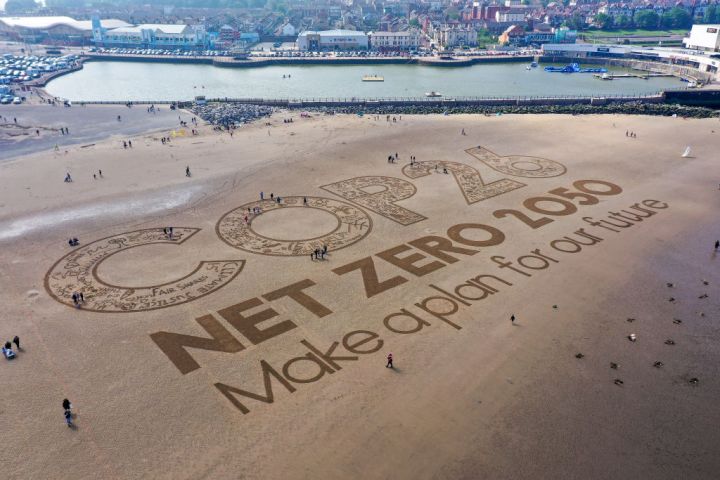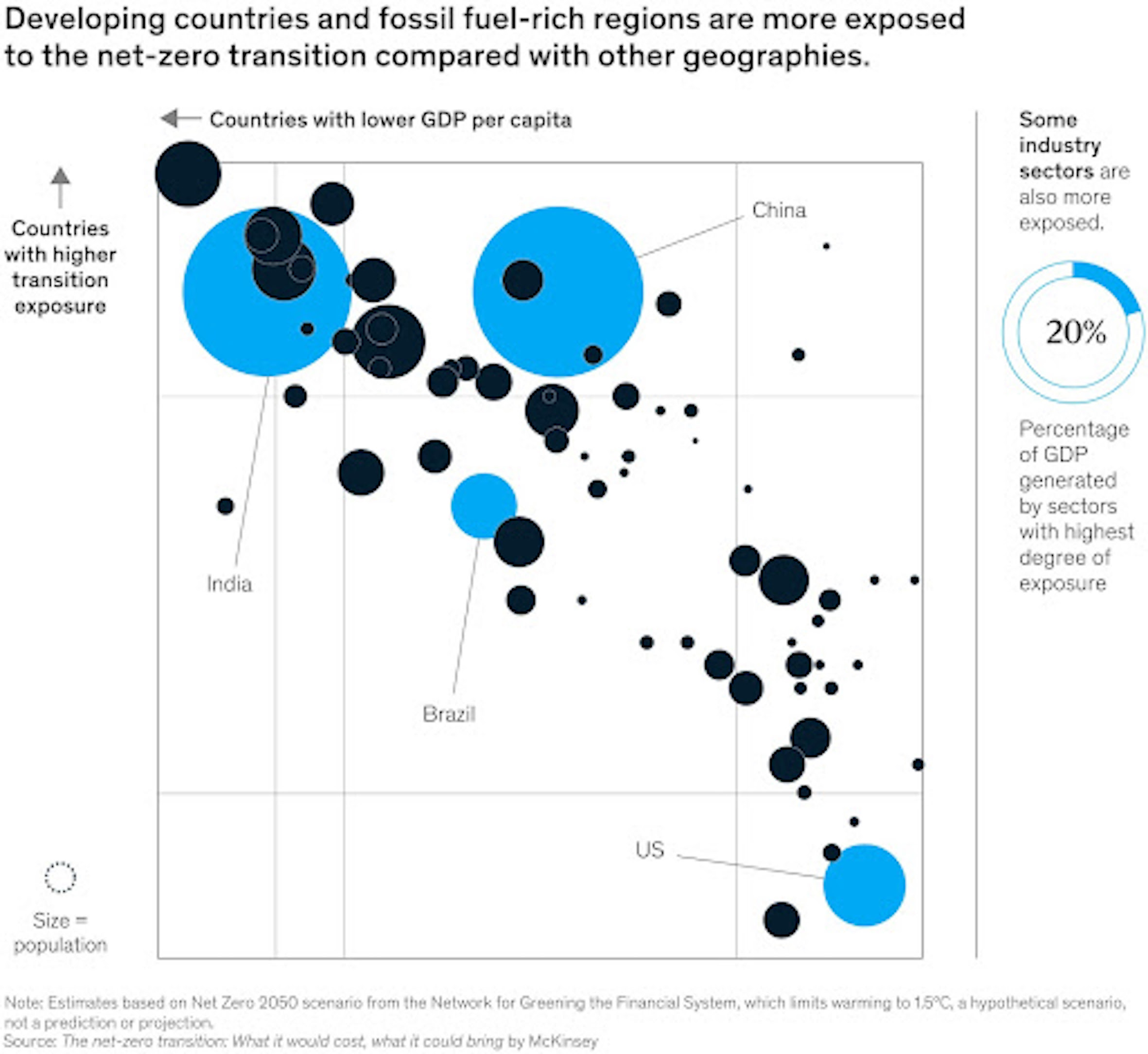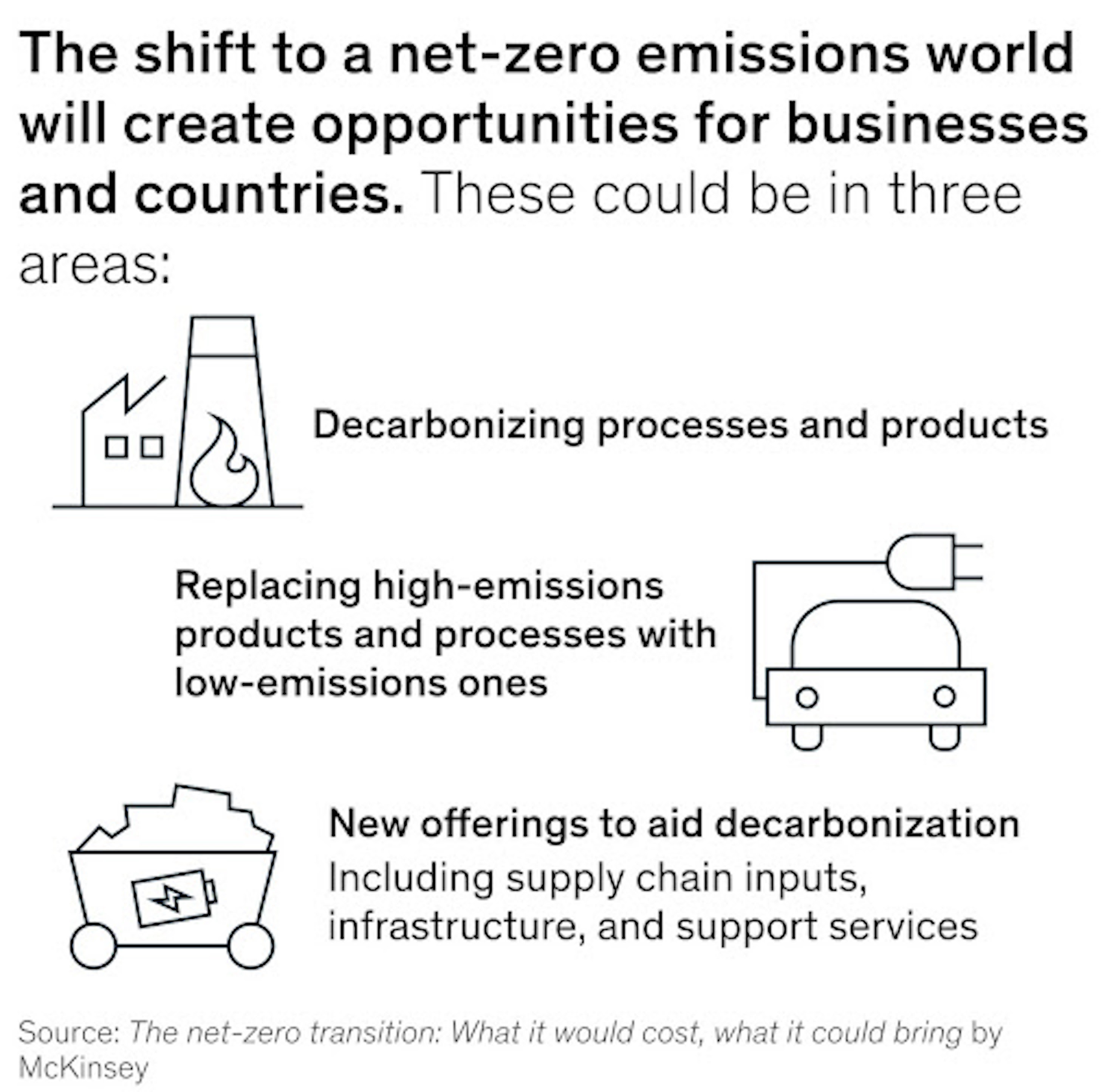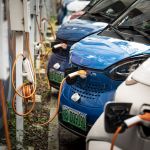DECARBONISING THE PLANET
Transforming global economy to reach net-zero by 2050 could cost $9.2-trillion a year – McKinsey

How much would it cost to decarbonise human activity on the planet? How much would it cost to avert irreversible and dangerous climate change? McKinsey says $9.2-trillion annually – or roughly 10% of global economic output – between now and 2050.
As you read this, greenhouse gas emissions continue unabated and are not being counterbalanced by removals. UN Secretary-General António Guterres has said that even if all net-zero commitments and national climate pledges were fulfilled, global warming would not be held to below 1.5°C above pre-industrial levels, increasing the odds of initiating the most catastrophic impacts of climate change.
It is in this context that McKinsey & Co have, in a new report, outlined a way that humanity might pivot towards a cleaner, net-zero future.
Among the headline statements is that transitioning to a decarbonised society globally could cost roughly $9-trillion per year – or 10% of total annual global economic output – which would mean a “fundamental transformation of the world economy”.
McKinsey is no stranger to orchestrating the movement of large amounts of money. One need only look at their history in South Africa. Investigations have shown that the company allowed itself to be used as a Trojan horse by the Gupta family. The consultancy giant was used, by the Gupta-linked Trillian and Regiments Capital, to extract billions from Eskom and Transnet. They have since paid back money derived from contracts which were tainted by State Capture.
In their new report, The net-zero transition: What it would cost, what it could bring, McKinsey looks at the economic transformation that a transition to net-zero carbon emissions would entail and provides estimates about the changes in demand, capital spending, costs and jobs – to 2050 – for sectors that produce about 85% of overall emissions.
The authors of the report stress that their analysis is not a “projection or a prediction and does not claim to be exhaustive” – it is the “simulation of one hypothetical, orderly path toward 1.5°C using the Net-Zero 2050 scenario from the Network for Greening the Financial System, to provide an order-of-magnitude estimate of the economic costs and societal adjustments associated with net-zero transition”.
Cognisant of the context laid out above, the report notes there are six characteristics that define the transition to net zero.
1: Transition would be universal: Here, McKinsey explains that all greenhouse gas emissions come from seven major energy and land-use systems. These are power, industry, mobility, buildings, agriculture, forestry and waste. Accordingly, “every one of these systems will need to undergo transformation if the net-zero goal is to be achieved”. Reaching net-zero emissions will thus require a universal transformation of the global economy.

2: The scale of the required economic transformation would be significant: The report says their analysis suggests that “the Net Zero 2050 scenario would require spending on physical assets of about $275-trillion between 2021 and 2050 (about 7.5% of GDP over the period)”.

3: These effects would be front-loaded:

4: The transition would be felt unevenly among sectors, geographies and communities, resulting in greater challenges for some constituencies than others: The report expands on this, saying that “lower-income countries, or those with economies that depend heavily on fossil fuel resource-producing sectors, would also be more exposed”. Sub-Saharan Africa, Latin America, India and some Asian countries, McKinsey explains, “would require capital spending of about 10% or more of GDP, approximately one and a half times more than the capital spending in other regions such as Europe, the United States and Japan”. They add that “within countries, certain communities could be more affected than others if their economies rely heavily on industries that have high levels of emissions or whose products are heavy emitters”.
In a McKinsey webinar on Tuesday, discussing how to enable the transition in developing nations, Mark Carney, UN special envoy for climate action and finance, said “the ways to get the cost of capital for the emerging developing world down are… blended finance properly scaled”.
He continued: “We should be using public multilateral development bank balance sheets in a way that it can scale on an order of magnitude. That’s the kind of reform and discussion we need this year.
“In addition… you’re now getting large asset managers, asset owners, banks, who are looking for the first time for net-zero-aligned assets, and that includes in the emerging and developing world.
“So, if you’re on a country platform like the South African deal… that was done at COP, others that hopefully will be done for Sharm el-Sheikh COP27… those are high-ambition transitions. In other words, becoming aligned with Paris [climate accord goals].”

5: The transition is laden with short-term risks, even as the transition will help manage long-term physical risks: Here the consultancy explains that “risks range from the potential for increased physical climate risks if any transition is abrupt or delayed, to heightened labor market disruption in the event that the nature of any change is so abrupt that workers have insufficient time to adapt. Large-scale asset-stranding is also a significant risk.”

6: Despite the challenges with making economic and societal adjustments, the transition would give rise to growth opportunities across sectors and geographies – and, critically, it would help avoid the build-up of physical risks: It is not all doom and gloom, according to the report, as “nations that have abundant natural capital, such as more hours of sunshine, or that invest in technological, human and physical capital, could well be positioned to prosper in the net-zero economy.”

OBP/DM





















 Become an Insider
Become an Insider
It’s not going to happen without a viable alternative. We don’t have solar ships. We have no battery tech that can replace petrol cars.
Any enforcement of climate change adaptation will hurt the developing countries. China and India simply will not allow rich western countries to dictate their path towards poverty elimination.
We need to adapt.